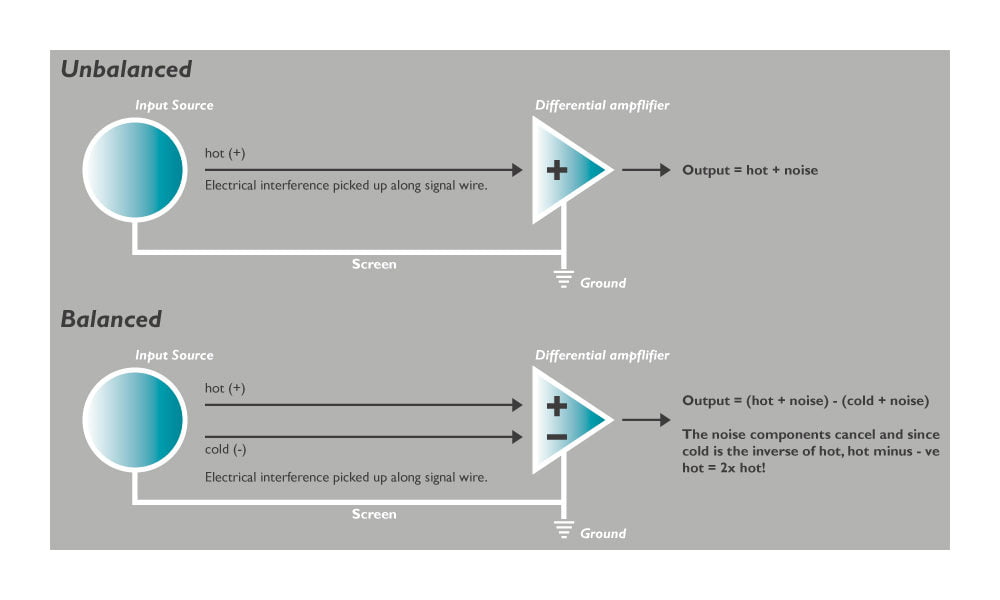6. Mic Level Leads
Mic level signals are very low indeed, and so in order to avoid the interference problem already mentioned, an additional technique is employed, known as balancing. This requires 2 signal wires and a screen, so the XLR is the connector of choice.
Advantages of Balancing
- It discriminates against noise and crosstalk very effectively
- A balanced output produces 6dB more signal level on the line
- It removes the possibility of ground-loops.
How it Works
Microphones - or any other balanced feeds - are designed such that the same signal is output on both of the signal wires (conventionally called hot and cold), except that one wire carries an exact mirror image of the other - in other words, the two signals are 180 degrees out of phase. These signals are carried to the receiving device where a differential amplifier inverts the phase of one of the signals, and electrically adds it to the other. The resultant signal is twice the magnitude of the originals, but most importantly, any stray noise picked up in the wires along the way is almost completely cancelled out by the summing process.
Adapter Leads
Sometimes it may be necessary to use a balanced microphone with a non-balanced jack input. For this you will need an adapter lead going from XLR to jack - the cold signal wire will be connected to the screen, either within the XLR or at the jack end. Note that when adapters like this are used, the noise cancelling properties of the balanced line will be lost, and phantom powered microphones will fail to operate.
To go from unbalanced to balanced, a DI box should be used. Why? Because balanced inputs are usually low impedance. If we drive them directly from an electric guitar for example (high impedance), then we break the 'rule of 10'. DI boxes have high impedance, and will buffer our guitar signal and present the balanced input with what looks like a mic signal.





